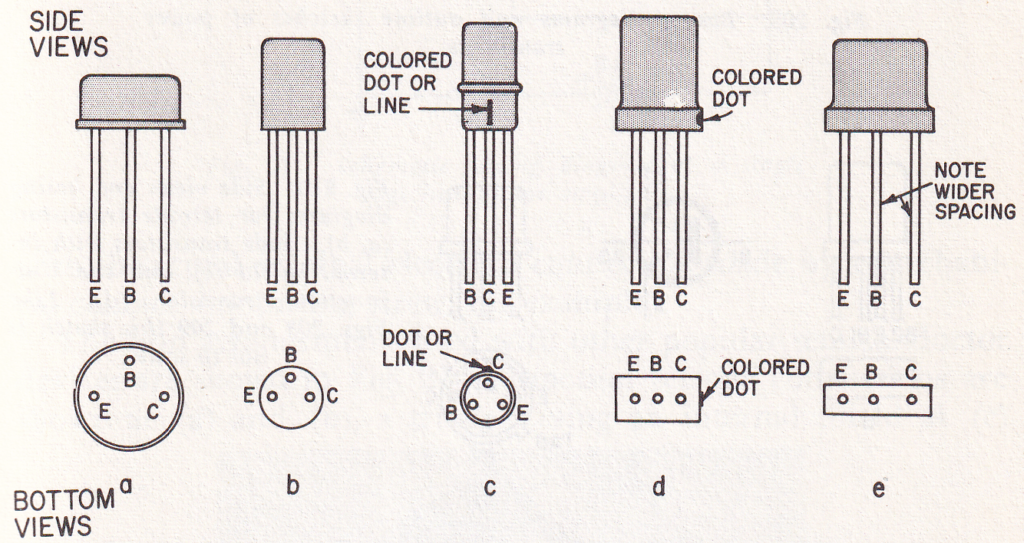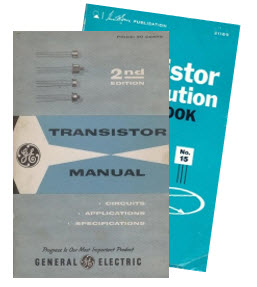Transistors
Transistors come in many shapes, sizes, and colors. Radios can have as few as one, or as many as fourteen or more. Surprisingly, the transistor count is not always a reliable indicator of performance.

Early radios used sockets so that transistors could be easily replaced. Semiconductors turned out to be so reliable that sockets were eliminated in later sets, primarily as a cost cutting measure.
Transistors act both as switches and amplifiers. They are solid state replacements for old vacuum tubes and they revolutionized everything.
Their rugged construction, small size and low power requirements all made useful portable radios possible. They also paved the way for computers, cell phones and just about every other gadget we use today.
With rare exceptions, early small signal transistors have three wires coming out of their bottoms called the Base, Emitter, and Collector leads. They can be either PNP or NPN transistors, and the two types are not interchangeable

The illustration shows what transistors looks like on a schematic diagram, including the Base (B), Emitter (E), and Collector (C) lead callouts.
Unless you, or someone else has damaged a transistor by reversing the battery; shorted the base lead with a badly placed test probe; or barbequed the critter with your soldering iron, you won’t need to replace many transistors.
Transistor Pinout Diagrams
Because there are so many different transistor case shapes, there are numerous pinout configurations. Sometimes the base lead is in the center of three leads in a row and the Collector is spaced farther away from the Base than The Emitter lead.
Other times the leads are in a triangular layout with the Emitter noted by a small metal tab, or red dot, and so on. Frequently service documentation notes the pinouts.

There are also numerous vintage reference books on the subject like the ones shown here.
It’s worth having a few on your shelf, and they are even more fun to read than a phone book.
Alternately, there are websites documenting vintage transistors. Find some here.
Transistor Substitutions
When replacing vintage transistors, I always like to use exact replacements rather than generic substitutes. There are so any variations in specifications—such as leakage, that generic replacements have frequently caused me more grief than joy. Your mileage may vary.
What Do You Think?
Do you have tips and experiences to share? Questions? Suggested corrections or additions? Leave a comment below. I’ll review comments and post or incorporate the most useful ones. Your email address is required if you choose to comment, but it will not be shared.
Hi there just wanted to give you a quick heads up. The words in your content seem to be running off the screen in Ie. I’m not sure if this is a format issue or something to do with browser compatibility but I thought I’d post to let you know. The design and style look great though! Hope you get the issue fixed soon. Many thanks
When I initially commented I clicked the “Notify me when new comments are added” checkbox and now each time a comment is added I get three emails with the same comment. Is there any way you can remove people from that service? Thanks a lot!